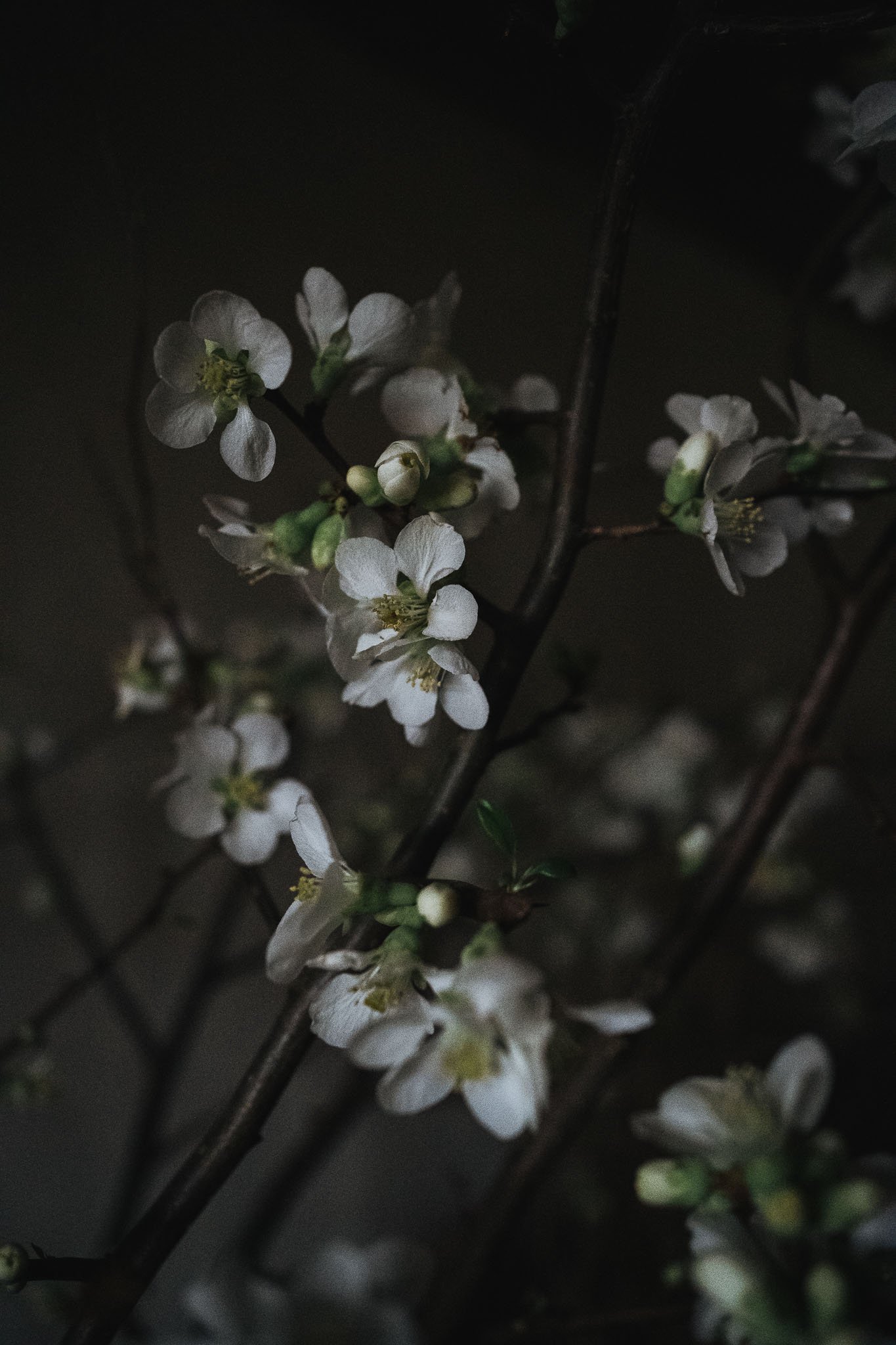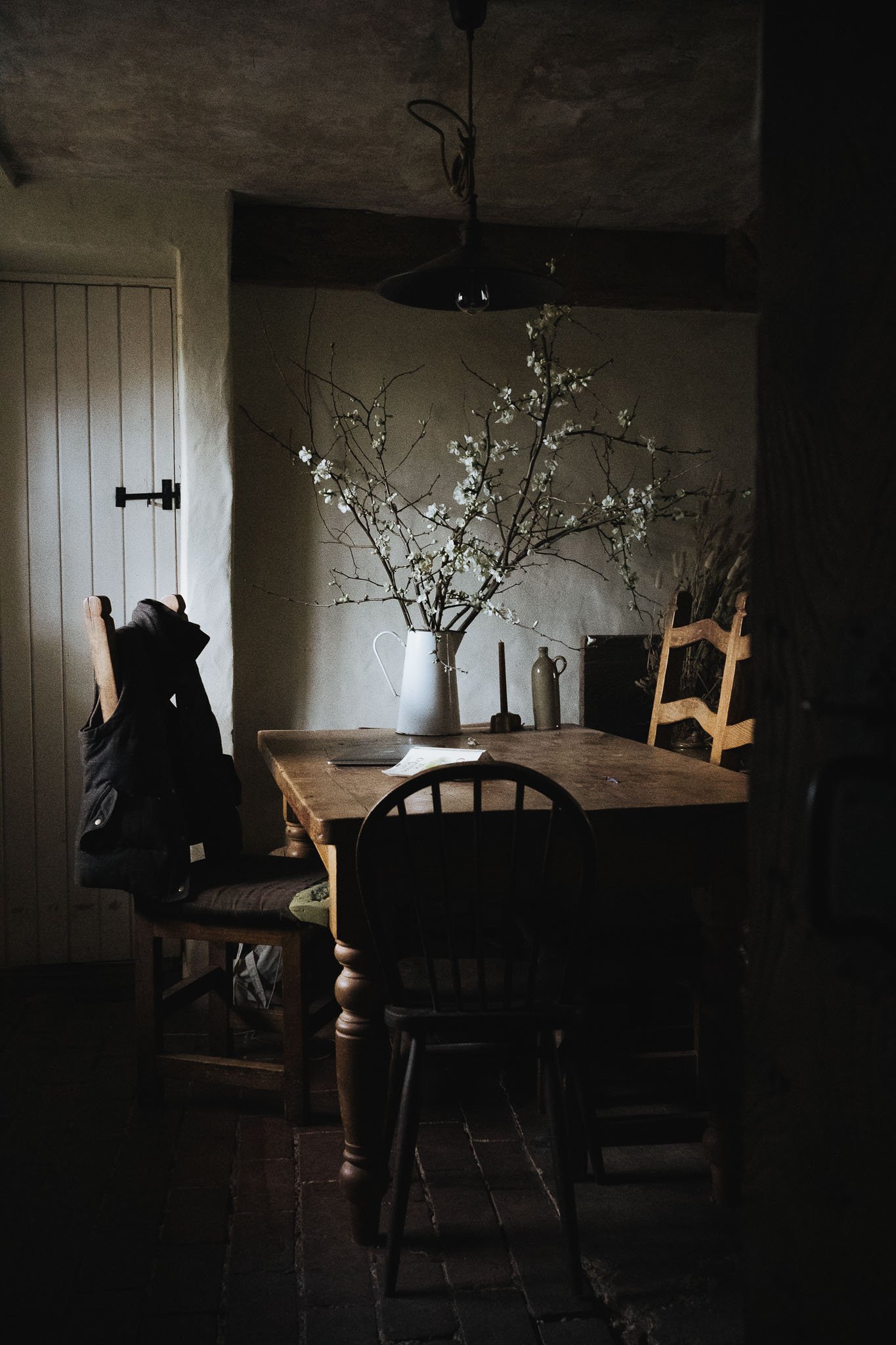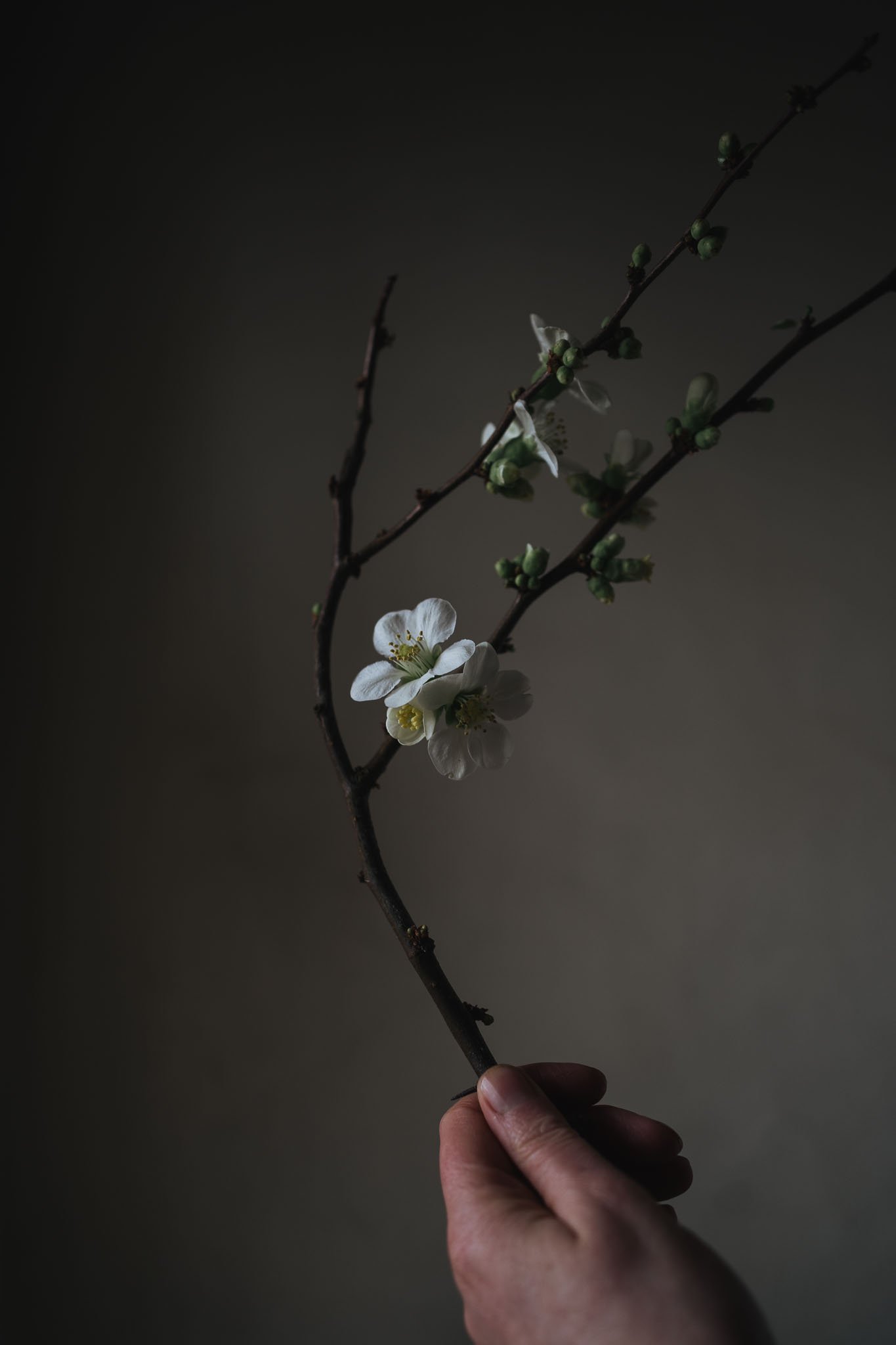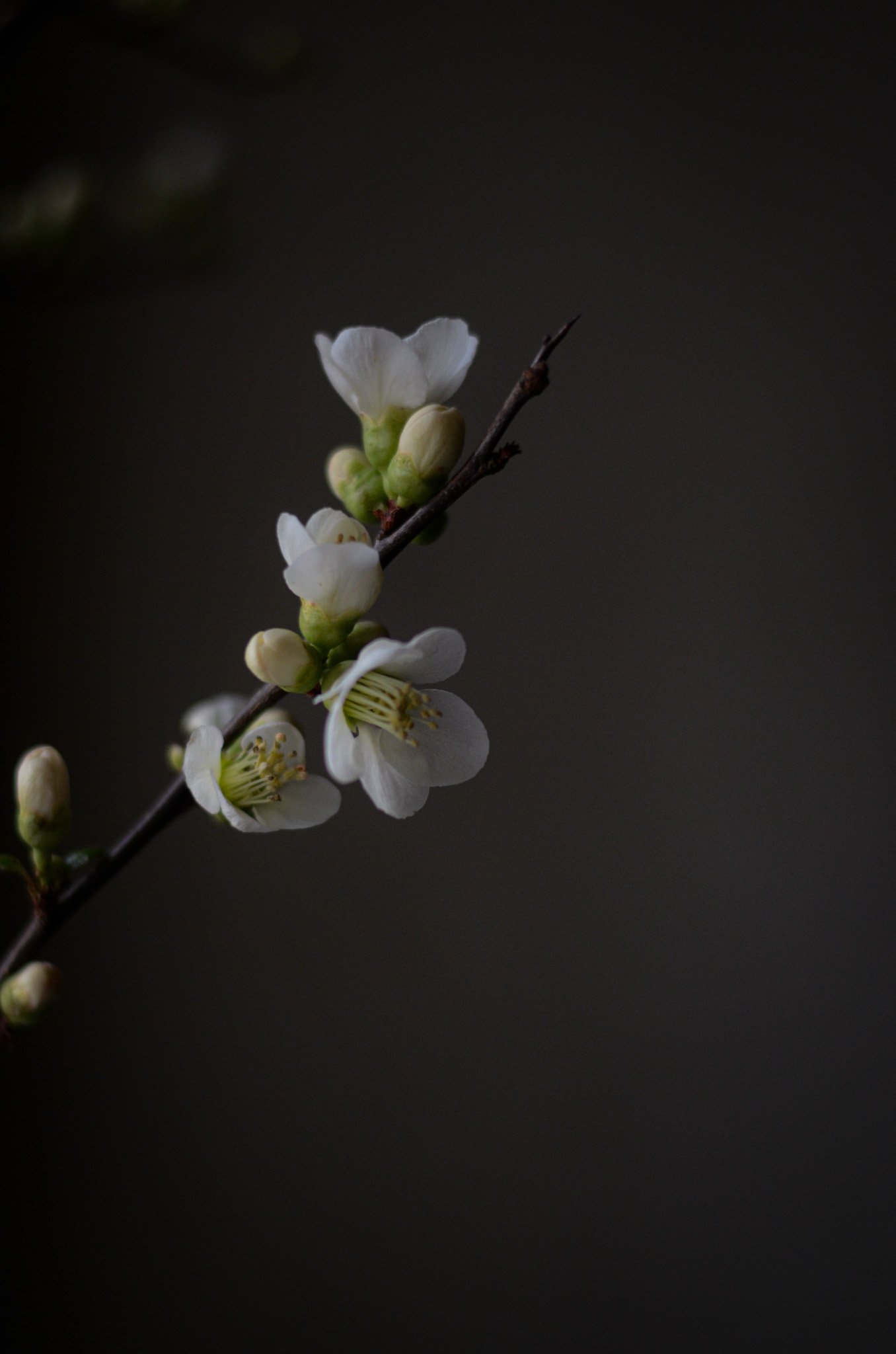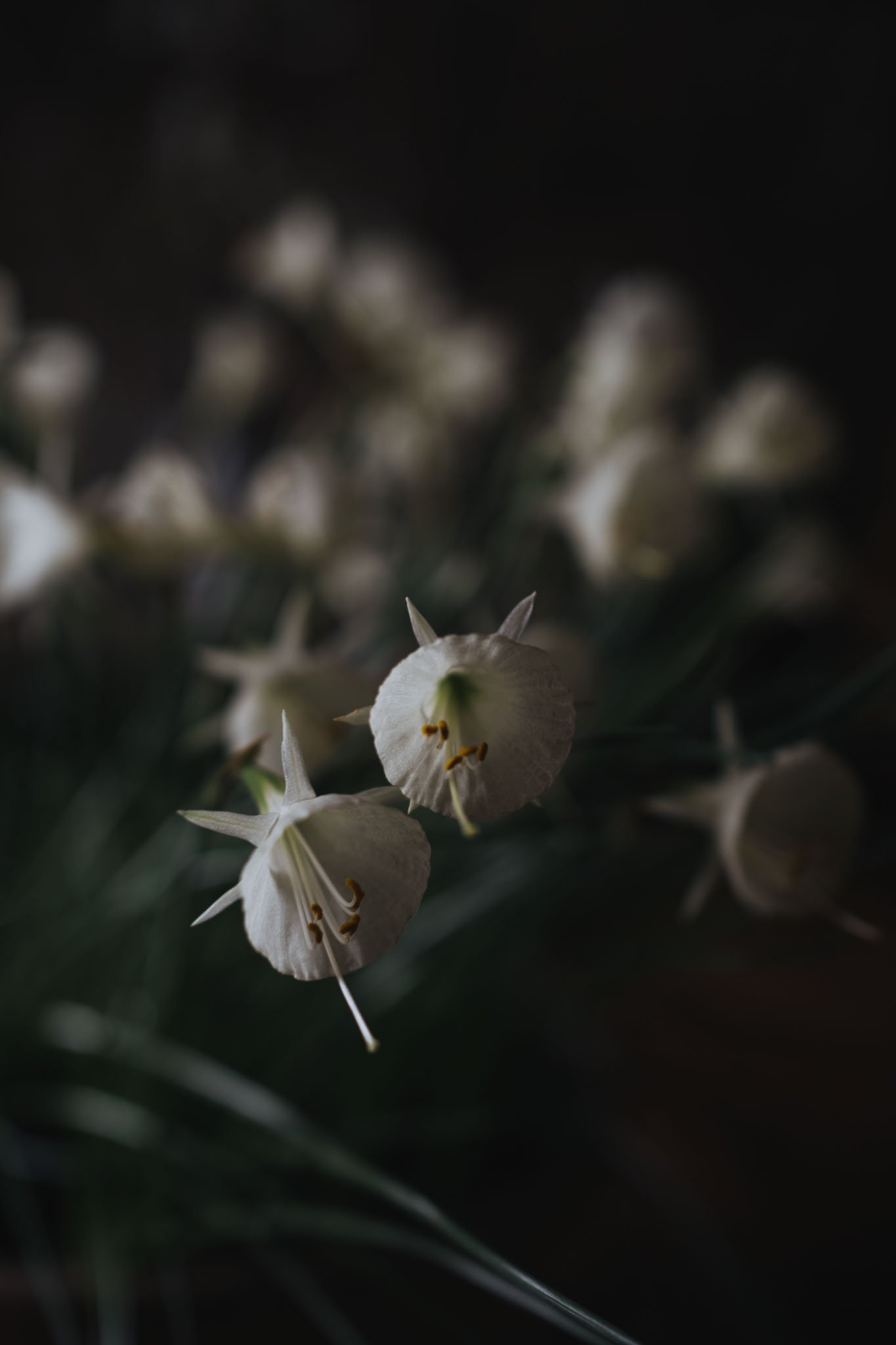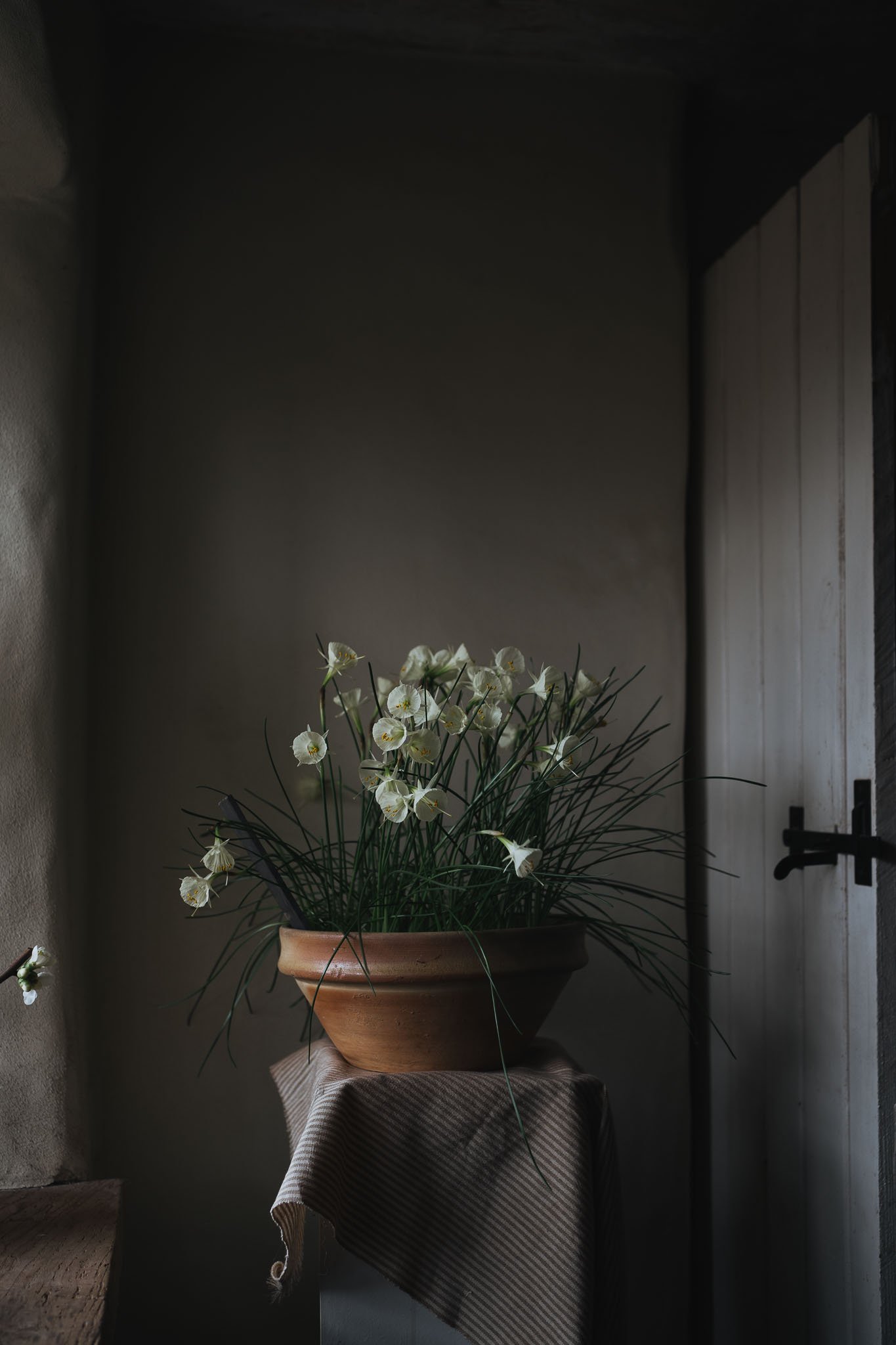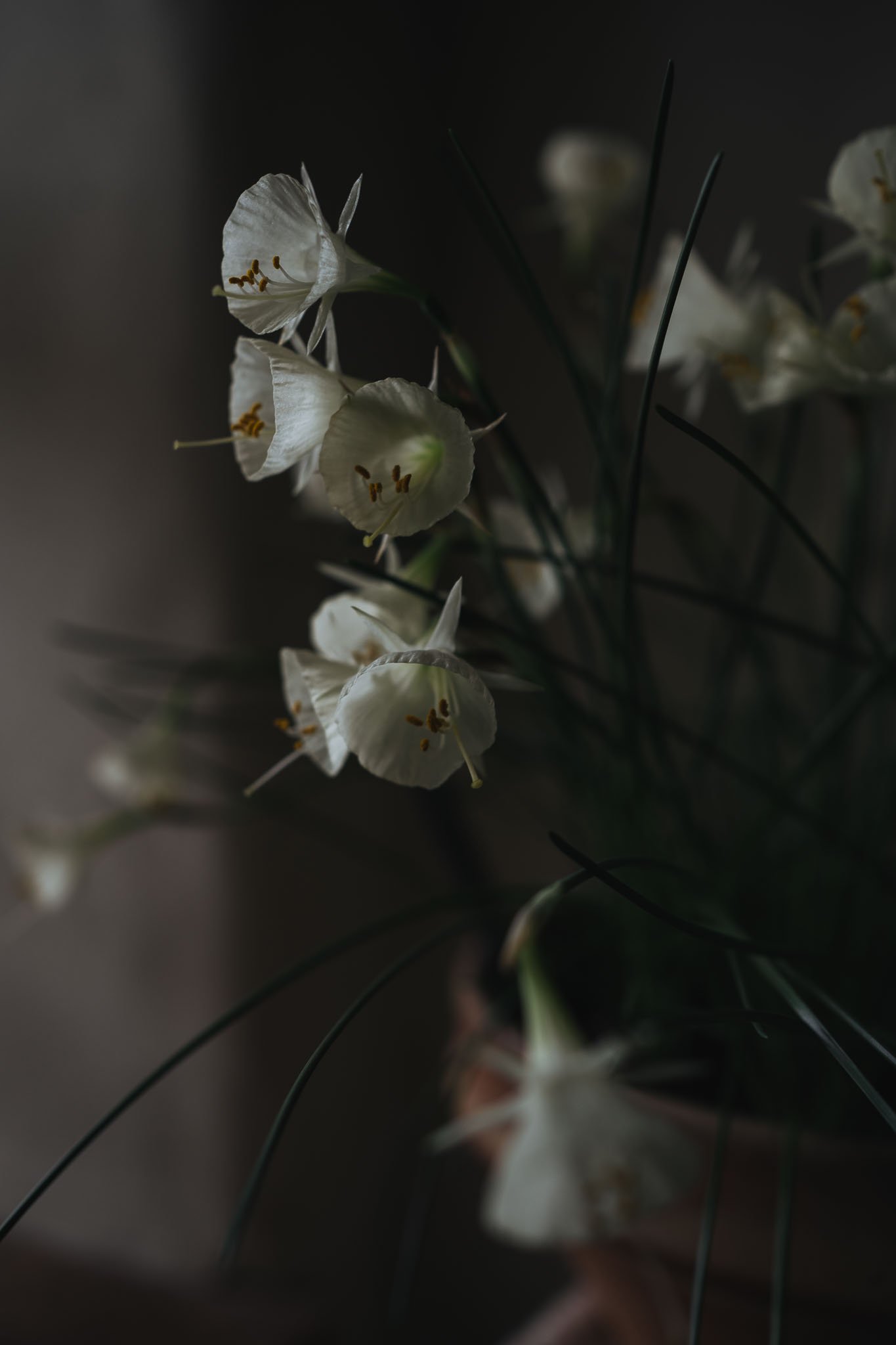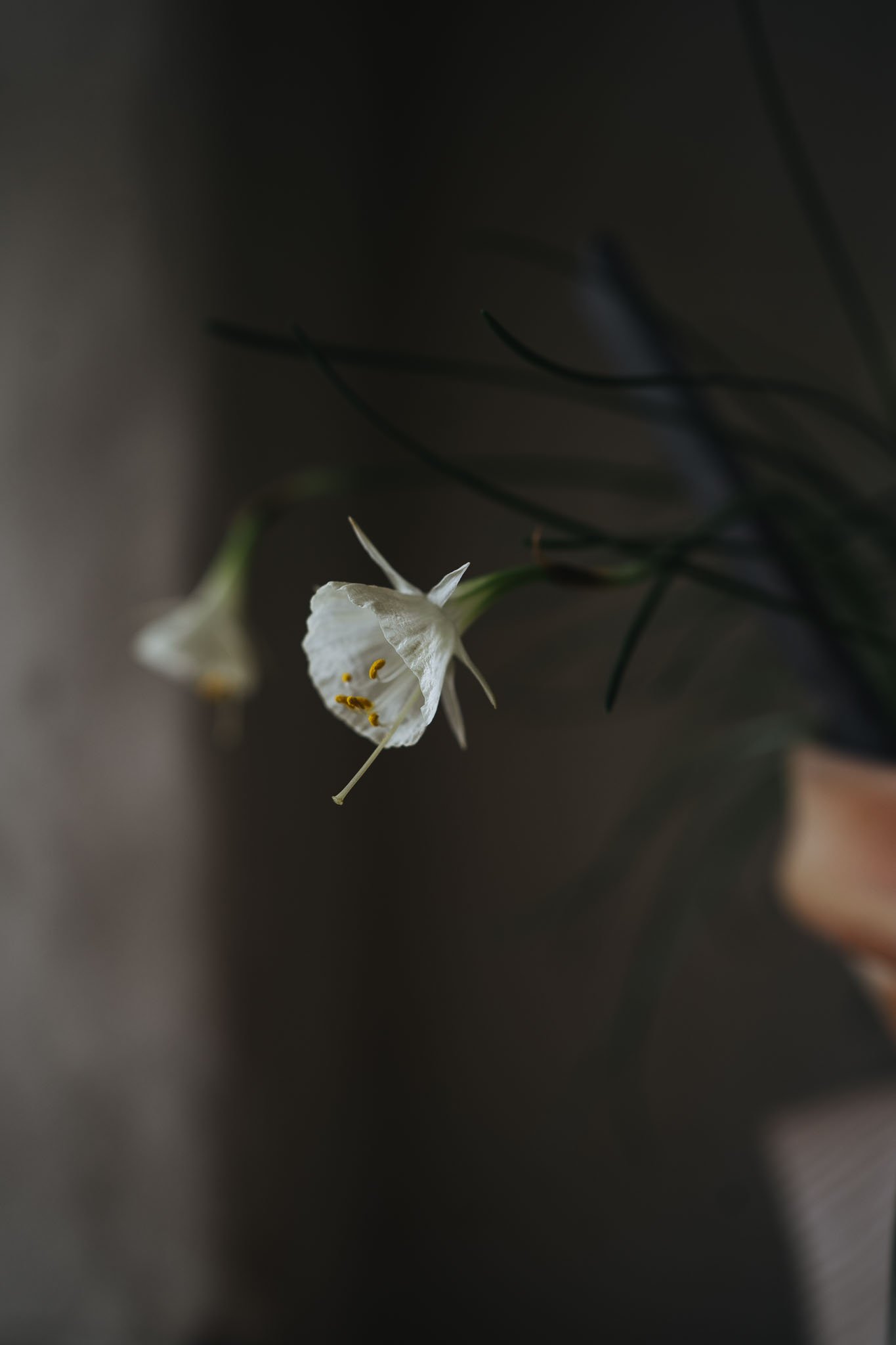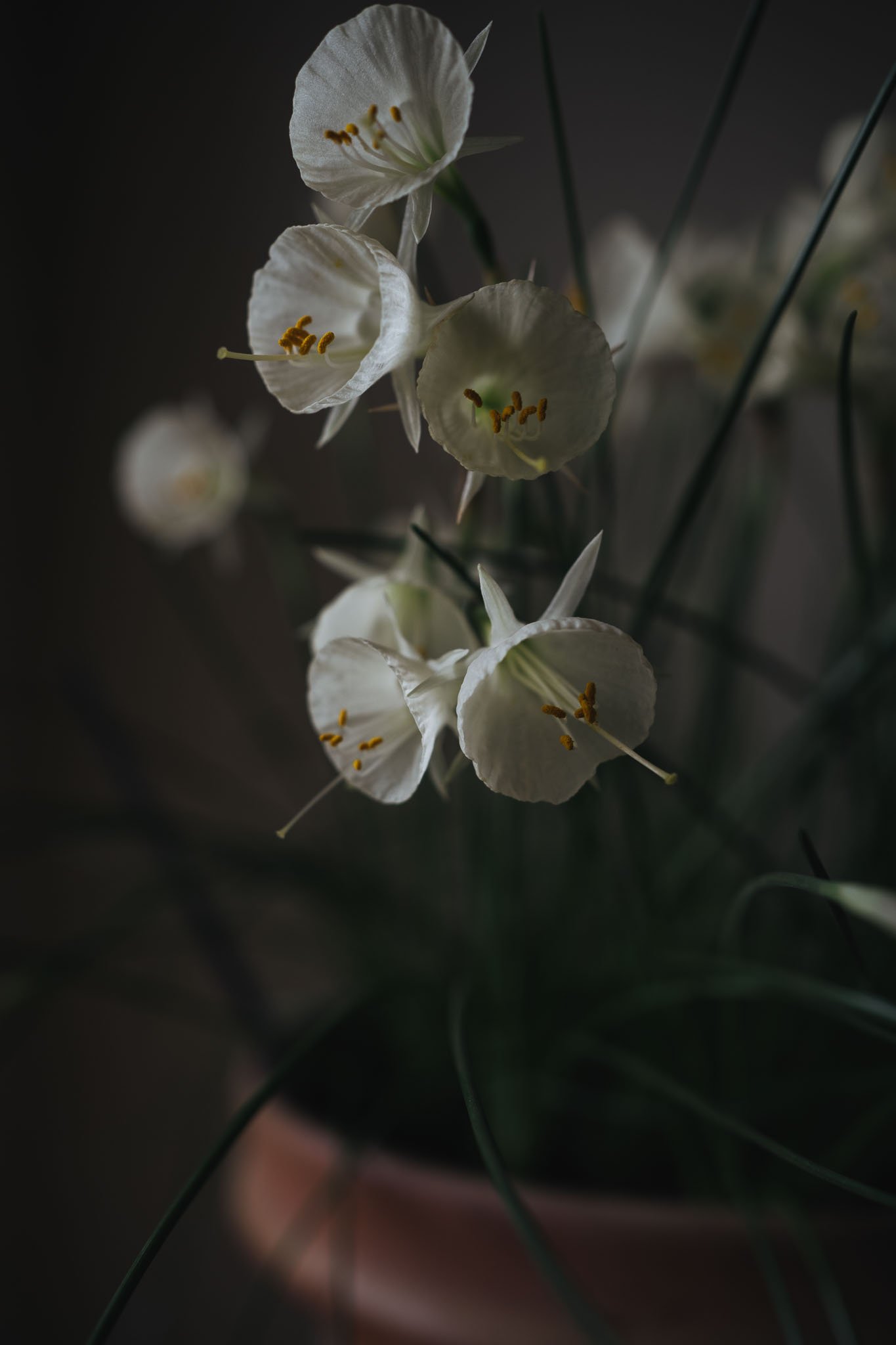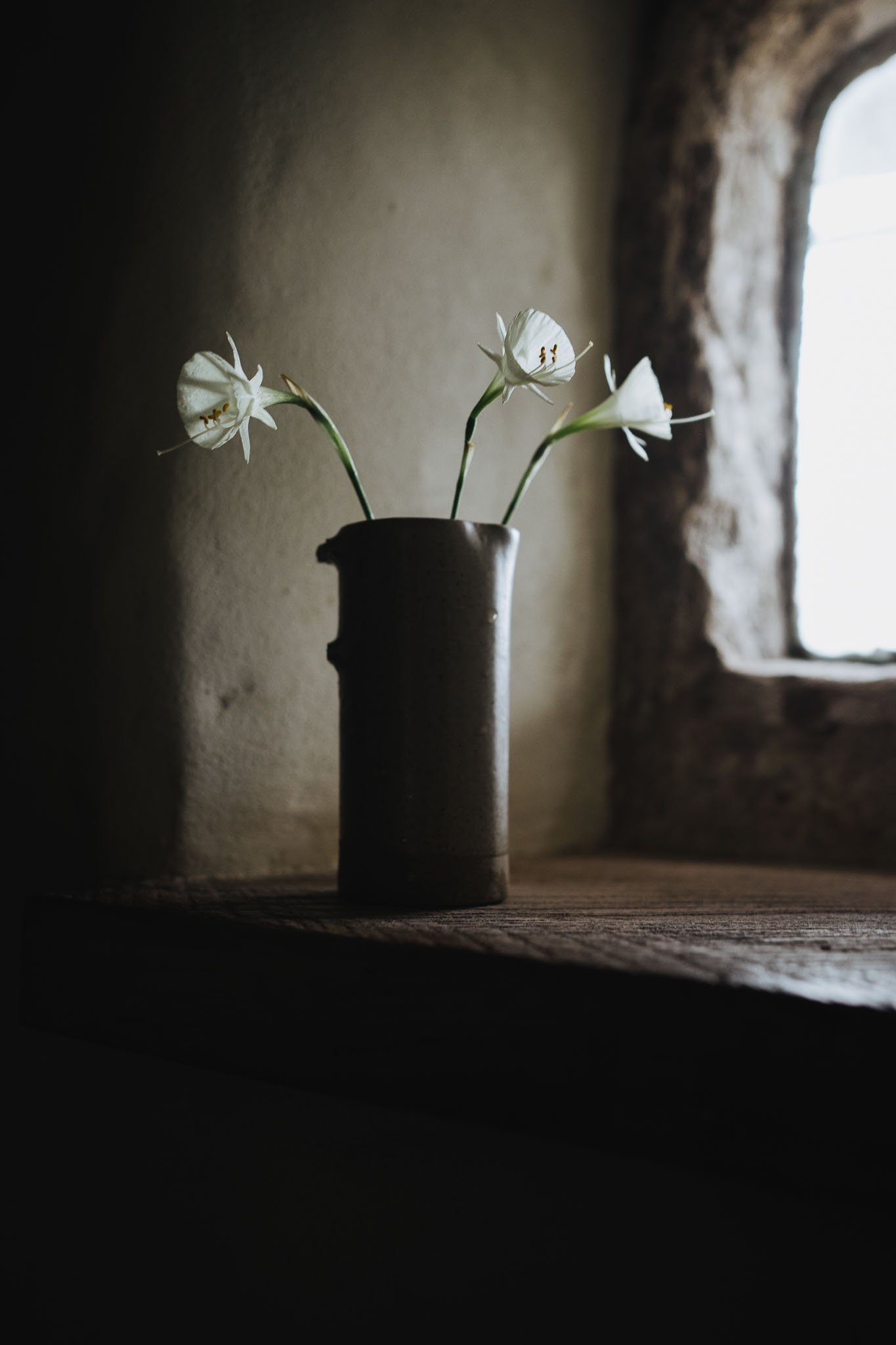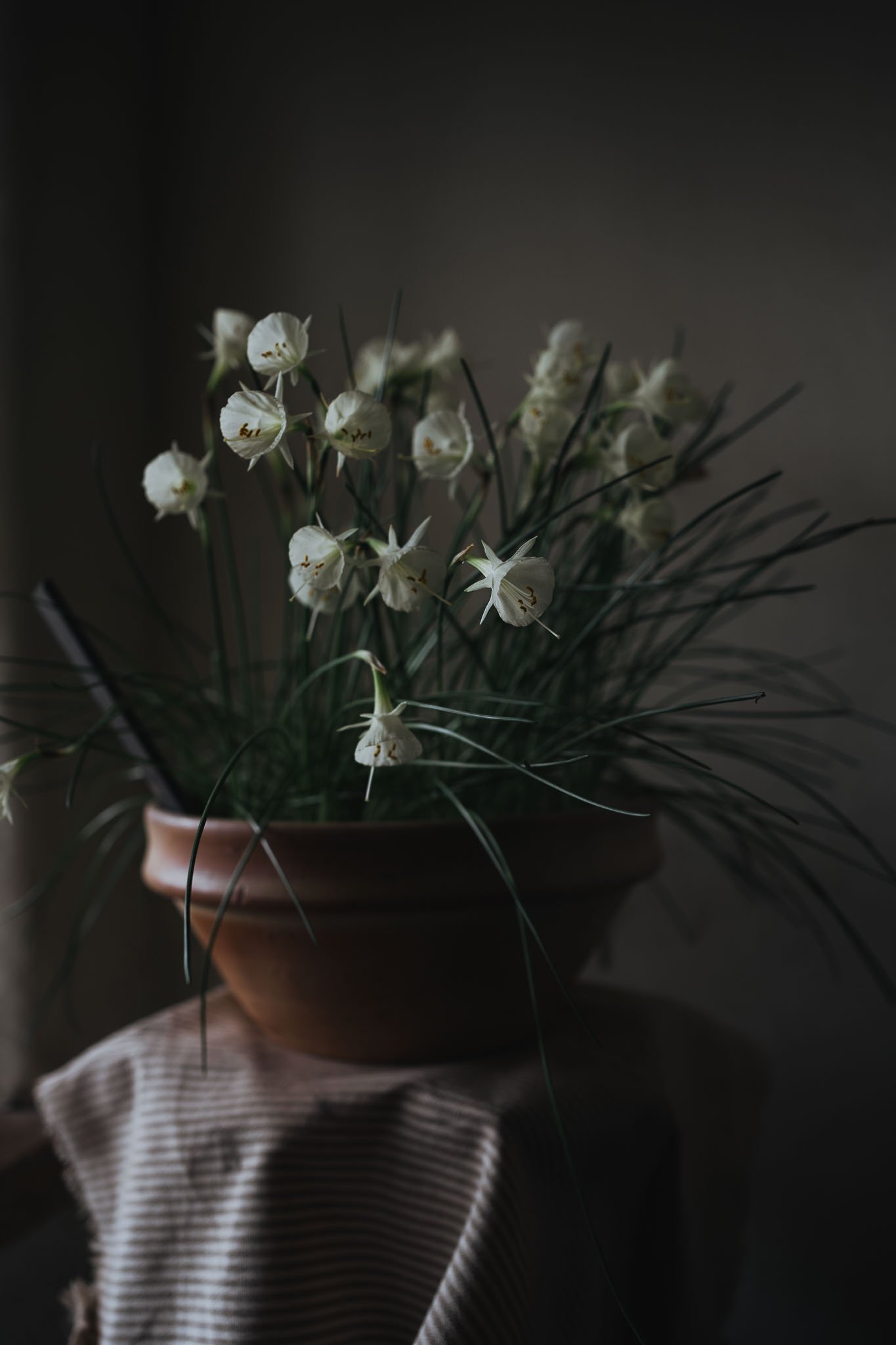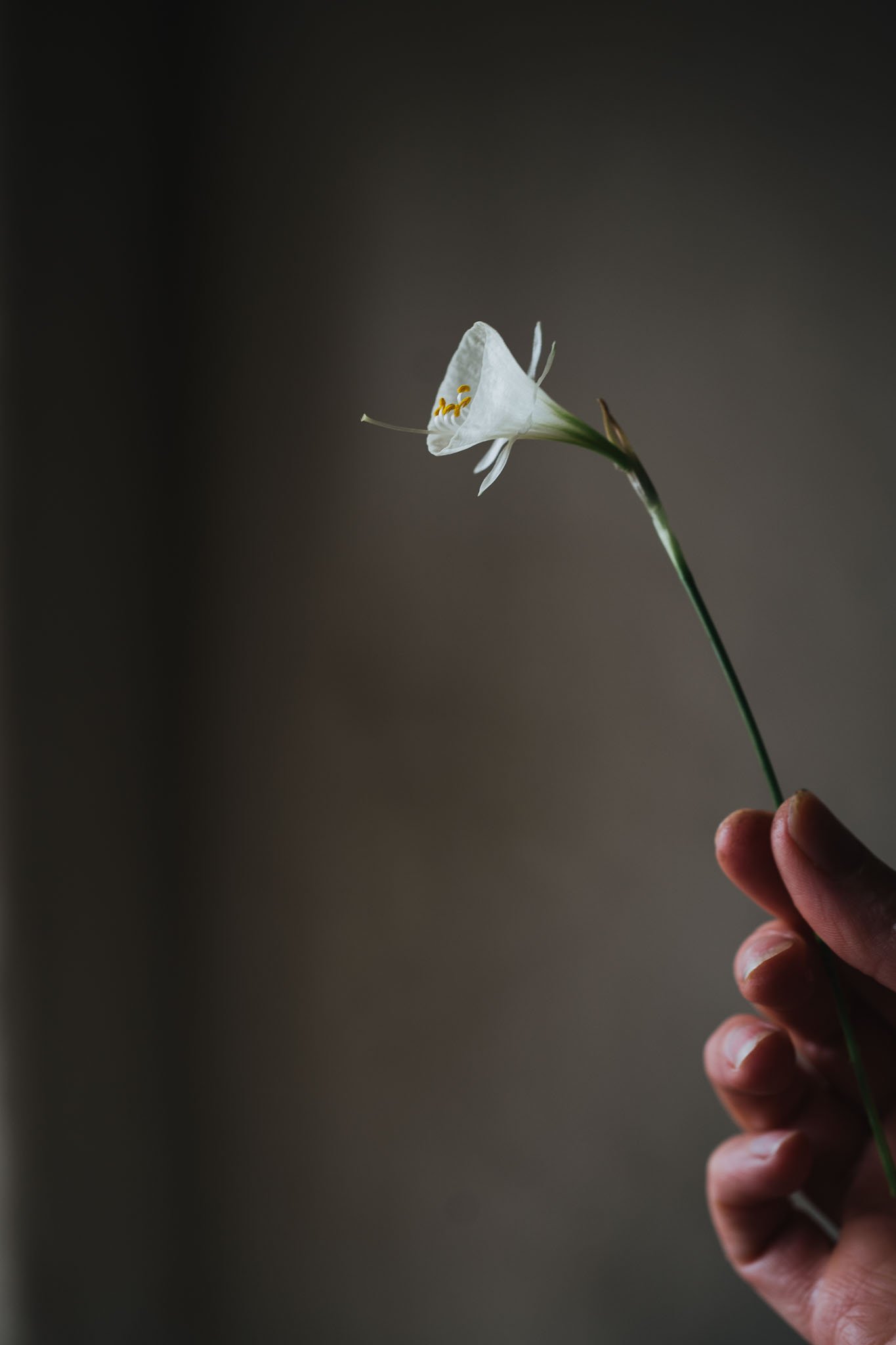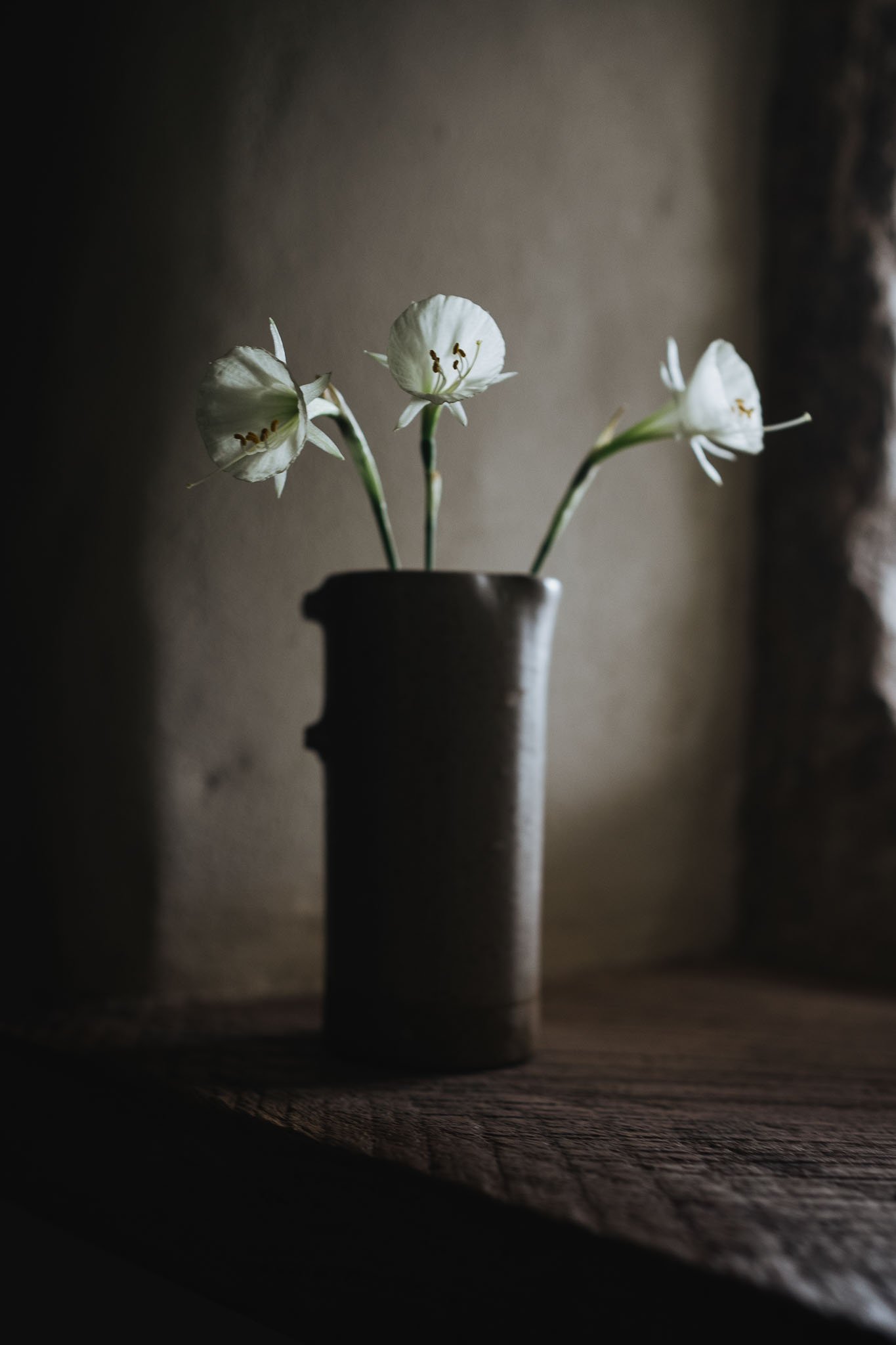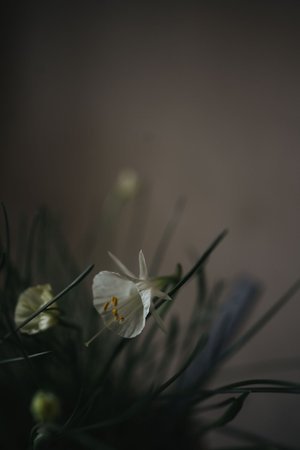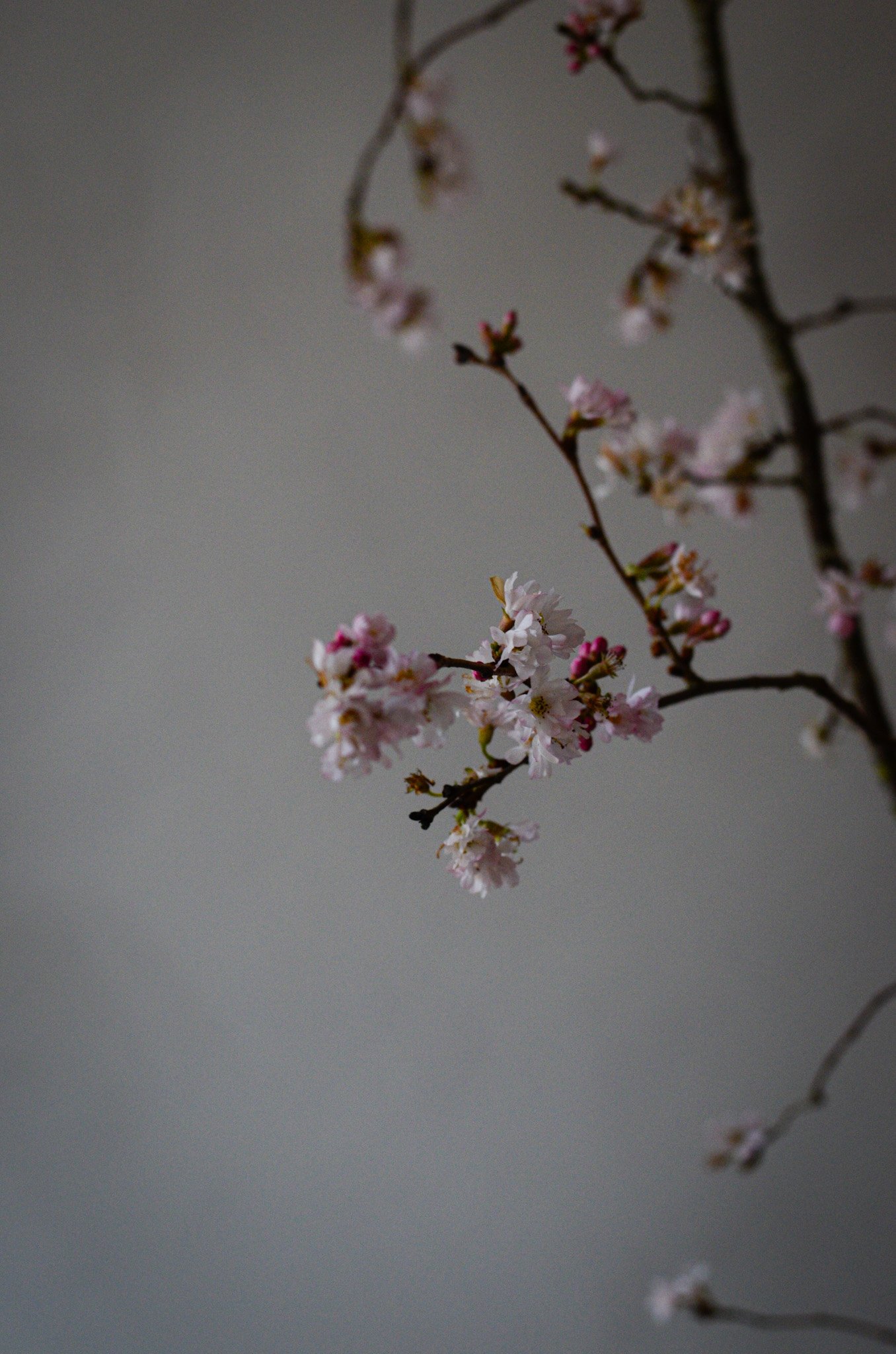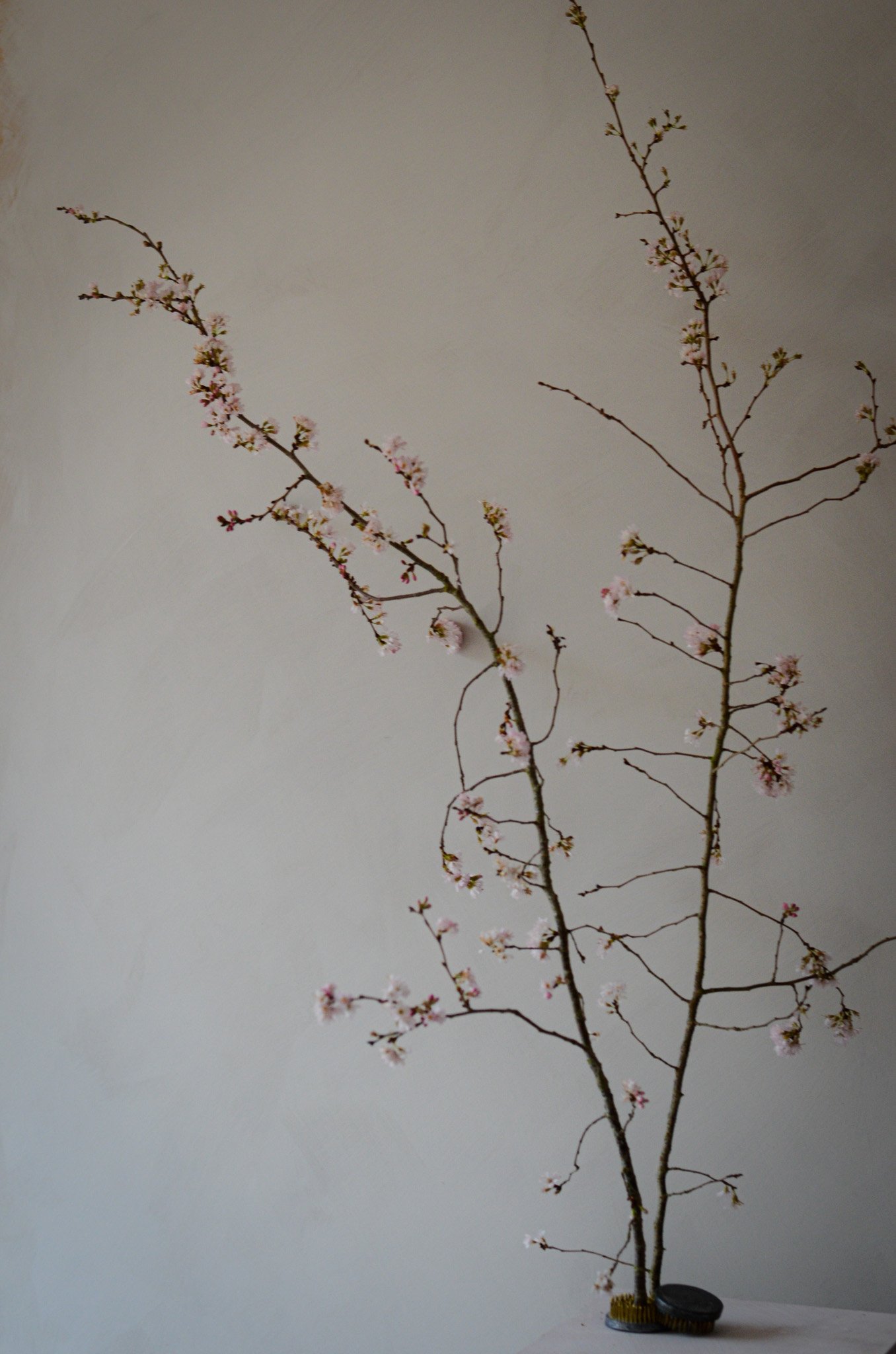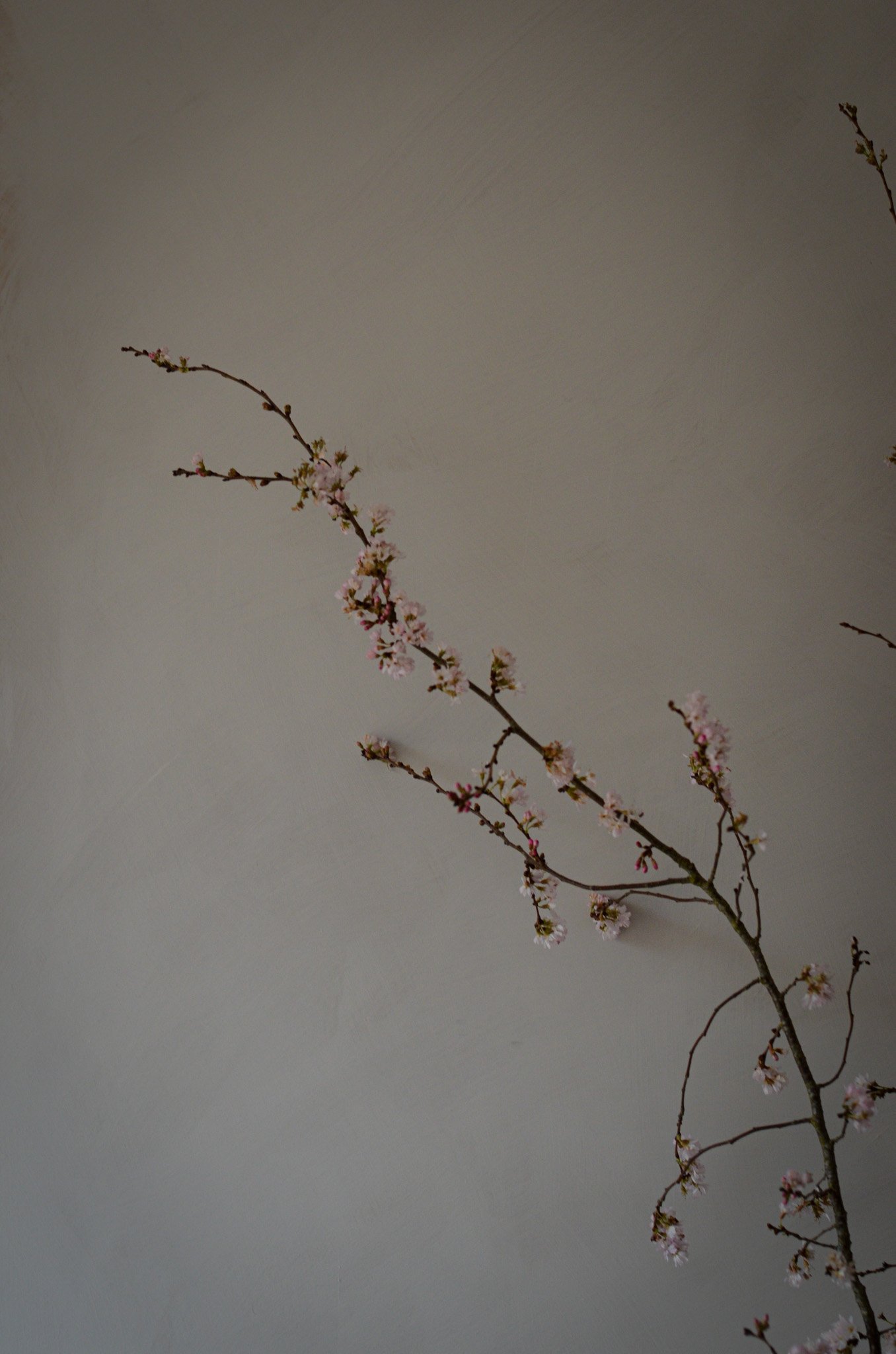What is in flower in chilly January
Japanese quince
I will start with this a list of all the things that drive me potty about growing quince for cutting.
The flowers seem to grow on the lower parts of the branch which means that if you cut it for the flowers, I end up with long bare branches above which threaten to take lumps out of my ceiling. If you cut them off, it looks stubby and clumsy.
They have unexpected thorns. Not enough that you plan for them, like with rose pruning, which I wouldn’t dare attempt without gloves and a wax jacket, but just the odd one which catches me by surprise and either jabs me or pulls a loop in my woollen jumper.
Their habit. They don’t grow up and they don’t grow out. The final shape of a quince bush can only really be described as a thicket. Once cut, one is encouraged to consider the form of the plant, notice the natural curve and inclination of the branch, and place it in a vase, bowl or urn in a way that makes the most of this shape. This I utterly impossible with the quince. It goes every which way and the only way to not lose your temper with it is to accept that the resulting design, unless you are only using twigs, is going to look wild.
It self-destructs. All those tangles and crossing stems means that if you cut any branch, either in bud or bloom, and try and extricate it from its neighbours, you risk pulling off all the buds, like stripping the stem out of a cavalo nero leaf. Given how hard you have worked to find a branch with an abundance of buds in the right place, this is dispiriting.
So why do I love it?
It flowers in January. Absolutely ruddy marvelous.
Indoor bulbs
There was absolutely no chance I was going to have paperwhites at Christmas, not a chance. The run up is frantic enough. But narcissi in January? I’m all in. I have been very snobby about this particular variety in the past, but I have admitted defeat, seduced by images in oversized dough bowls on Instagram.
Narcissus bulbocodium 'Arctic Bells'. Petticoat hoops of the palest lemon.
Top tips for having bulbs indoors
The advantage of having them indoors is you can use interesting containers. Think pudding bowls, mixing bowls, urns and glassware. However, you absolutely must not over-water them. I have done this; they were looking a bit floppy, and I mistook this for thirst and tipped a little water out of my glass onto them. And then I did it again a few days later. They are now really quite damp. However, there is nothing to be done but hope they grow through it and put them in a slightly warmer place to encourage a bit of evaporation and transpiration.
Even if your bowl is glazed, put a mat or a slate underneath it to protect your table or windowsills. I find not even the sturdiest looking containers are totally watertight and they seem to ‘breathe’ moisture. The only failsafe option for this is glass.
Cool and light will give you the longest display in terms of flowers, but you can use temperature cannily to bring the flowers on or slow them down. After a few weeks in my cool study, I got impatient and put them on the kitchen windowsill. The first one bloomed a day later, and my heart sang.
Violas
I thought I had had the best of these, or that I had to wait. A neighbour gave me a tray of plug plants of the softest brown and muddiest taupe violas at the tail end of last summer and I potted them up into a tray, I between the last of the crème brulee phlox. The phlox went on, late into the year, but then succumbed to that cold snap we had before Christmas. The violas didn’t miss a stride and have, with a little deadheading, flowered their socks off.
I do also have some Tiger’s Eye in the greenhouse and one of the plants has bloomed enthusiastically. Unfortunately, it seemed to also have attracted a tiny snail that lived underneath its pot and so every single flower has a bite mark out of it. I have removed the snail and brought it inside and I will photograph it for you when it has been restored to its full glory.
Viola ‘Tiger Eye’
Autumn Flowering Cherry
This year, I lost a flowering cherry tree. Suddenly. Inexplicably. Sadly. Taunton is excellent for trees and I regularly bless whoever planted such an incredible range of beautiful specimens. But now the winter cherries are coming into full, tangled blossom in the town, and my own remains bare. Unless you knew the trees, you wouldn't be able to pick it out from the other, dormant trees that surround it in the orchard. I know though. I know that it should be flowering.
It's my fault; I tempted fate. I wrote a blog post for Gather last year declaring it my favourite plant in the whole garden and it almost instantly withered and died.
However, it is tree buying season, and I shall get another. Prunus subhirtella 'Autumnalis' is not a tree I am willing to live without.
Here are some pictures from last year, when I was lucky enough to cut limbs off it, and bring it indoors.



